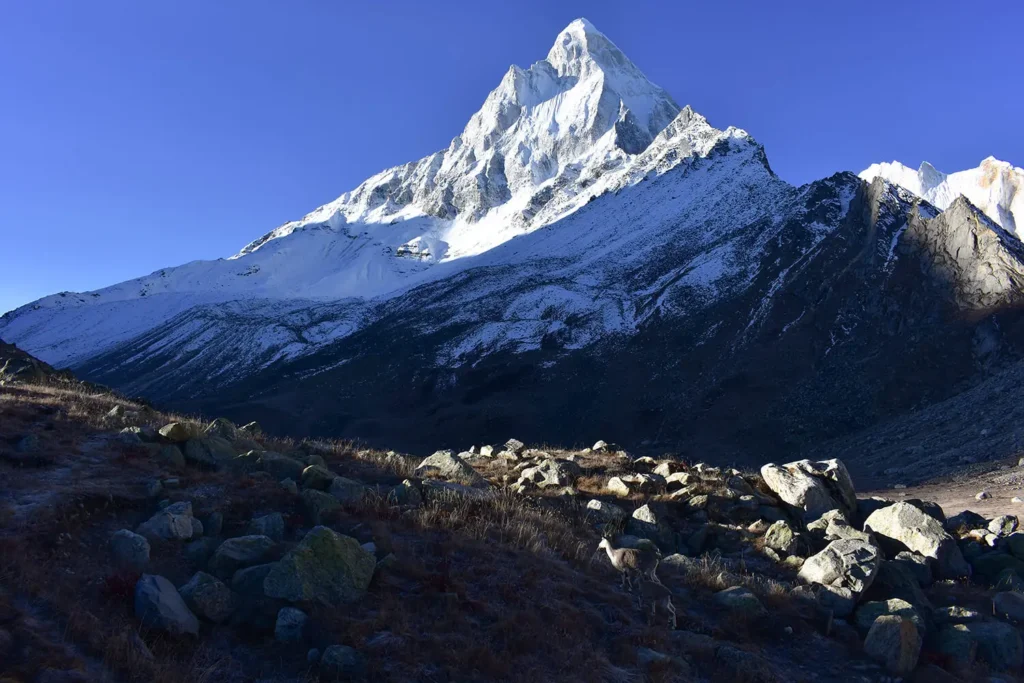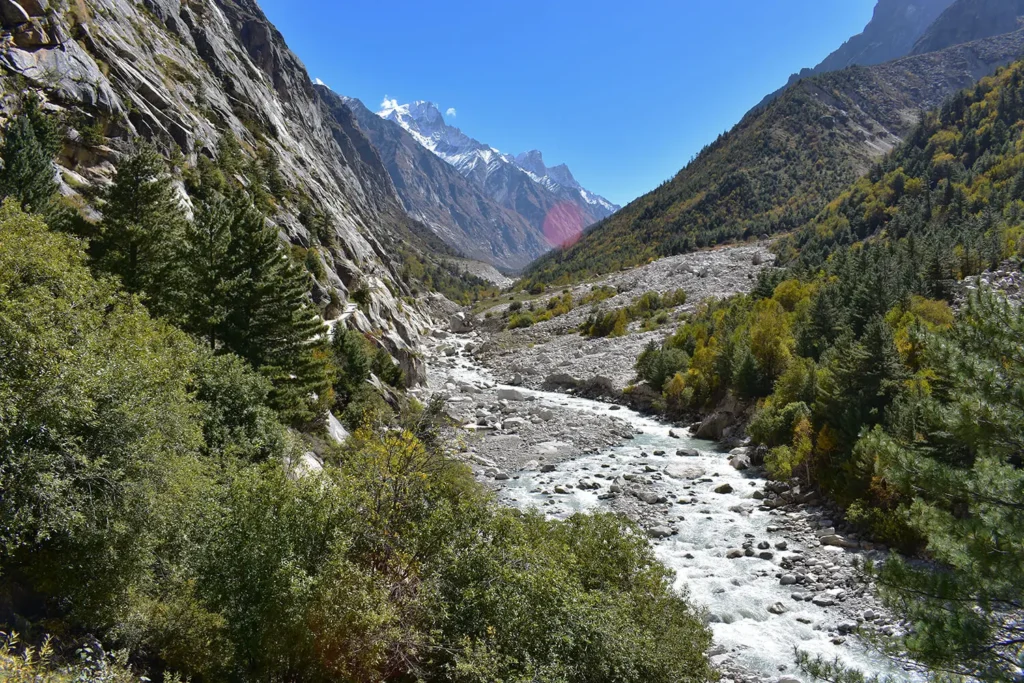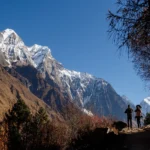The best time to visit Gaumukh Tapovan Trek is from May to June and September to November.
Gaumukh Tapovan, the holy trekking trail famous for spirituality and adventure, is a classic Himalayan trek best accessed during the summer and autumn. May to June in summer and September to October in autumn are the best times to visit the Gaumukh Tapovan trek in Uttarakhand. The trekking conditions are favourable and the Gaumukh Tapovan offers dynamic landscapes during these months.
Avoid Gaumukh Tapovan trek during the harsh winter months and monsoon season in July and August.
Here is a detailed season-wise guide to the Gaumukh Tapovan Trek. Know more about the best time to visit Gaumukh Tapovan and plan your trip according to your interests and preferences.
Gaumukh Tapovan in Summer (Mid-May to June)

Summer is the busiest time for both devotees undertaking the Chardham Yatra to Gaumukh and for trekkers traversing this route. May to June, the summer months are the best time to do the picturesque and thrilling Gaumukh Tapovan Trek in Uttarakhand.
Gaumukh Tapovan in May
Pick early summer, from May to mid-May, to see snow on the trails. You will find residual winter snow in May. By late May, the snow on the trail recedes, welcoming summer colours. This melting snow and pre-monsoon rains add to the volume of the Bhagirathi River and flow fiercely. Scattered vegetation starts turning green. Thus, Gaumukh presents a mix of both snow and greenery if you trek to Gaumukh in May.
Gaumukh Tapovan in June
The trail up to Gaumukh is bustling with pilgrims in June. June is the best time to visit Gaumukh Tapovan for lush green meadows and clear views of the big mountains. The unpredictable nature of the mountains could cause some bouts of precipitation in June. Come prepared with rain gear in the summer months.
Gaumukh Tapovan in Monsoon (July to August)
In July, the rains start pouring continuously. There is a high risk of landslides and rockfalls, making the trail very dangerous to cross.
However, the rains do not deter the devout who continue their pilgrimage throughout July and August till Gaumukh. The trail after Gaumukh to Tapovan is riskier during the monsoon months of July and August.
Gaumukh Tapovan in Autumn (mid-September to mid-October)

Although autumn’s trekking window is much shorter than summer – being only 4-5 weeks long – this is the best time of the year to do the Gaumukh Tapovan trek. The colours that come with autumn transform the previously green-only scenery into flamboyant brown, yellow, orange and maroon.
Gaumukh Tapovan in September
The towering mountains appear crisp and sharp if you trek to Gaumukh in September. September is also the best month to capture the mighty Himalayan peaks.
With winter right around the corner, the glaciers freeze, reducing the amount and flow of water. Due to this phenomenon, the Bhagirathi changes colour into a deeper blue, and its flow is gentle, unlike the roaring currents of the summer.
Gaumukh Tapovan in October
The scenery changes completely in October. Autumn colours deepen by October. Pre-winter snowfall can be expected in October at higher campsites. After November, the snowfall intensifies, and trekking conditions become dangerous again until next summer.
Pick the autumn months of September to October to enjoy an empty trail. Very few pilgrims visit Gaumukh in October.
Gaumukh Tapovan in Winter (December to February)
There is heavy snowfall in Gaumukh in winter. Under no conditions can a trek take place during this time. Gangotri becomes a ghost town and opens only at the end of March. As the snow gradually melts, the trails become visible and accessible for the next trekking season.
Gaumukh Tapovan in December
Higher campsites of Gaumukh Tapovan receive snowfall by December. Although the lower reaches remain accessible, it becomes challenging to navigate the trail.
Gaumukh Tapovan in January
Gaumukh Tapovan remains shrouded in white after heavy snowfall in January. It snows regularly in January. It can be challenging to hike on the snow-covered Gaumukh trek route, especially since Gangotri, the starting point, receives snowfall as early as January.
Gaumukh Tapovan in February
By February, the lower regions receive fresh spells of snowfall, enveloping the entire landscape in shades of white. An extensive amount of snow on the trail restricts trekkers from trekking to Gaumukh.
Gaumukh Tapovan Highlights
Gaumukh Tapovan Trek takes you closer to the gigantic glacier of Gaumukh, one of the largest glaciers in the Himalayas. The Gaumukh Glacier spreads around 30 km in length and is 4 km wide. The snout of Gaumukh is as gigantic as the glacier. To witness a glacier this big from a close distance is a rare experience.
Gaumukh Tapovan trek rewards you with the grandeur of Mt. Shivling. Along with Mt. Shivling, the trek offers clear views of Mt. Meru and the Bhagirathi sisters.
The trail takes you to Gaumukh glacier, where Bhagirathi originates and later becomes the holy river of Ganga. Tapovan is an occasional home to hermits seeking spiritual awakening.
Gangotri temple is another spiritual stop on this trek. The history of Gangotri dates back to the 18th century. The locals will share their exciting anecdotes from Mahabharata as you visit the Pandava Gufaa, a place where the Pandavas are believed to have rested.
The Gaumukh Tapovan trek is moderately difficult. Beginners can also attempt the trek with a fair amount of preparedness. The trek covers around 46 km and scales a maximum altitude of 15748 ft. in a week. You traverse the holy Gaumukh trail and witness the unforgettable amalgamation of history, spirituality, and mind-boggling landscapes.
Stunning backdrops, iconic sunrises and sunsets entice trekkers to embark on Gaumukh Tapovan trek. The trek starts and ends at the holy town of Gangotri.





